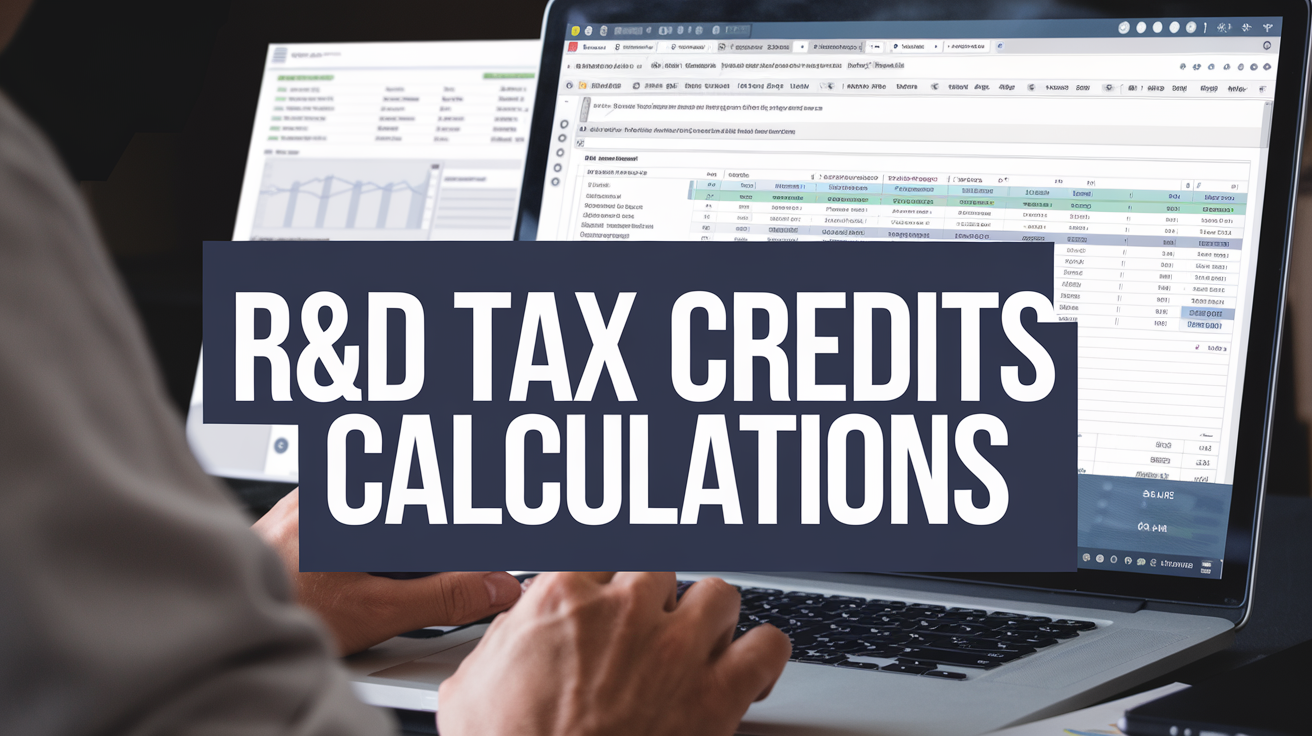R&D Tax Credits Brentwood Essex
R&D tax credits in Brentwood, Essex, are a UK government-backed incentive designed to reward innovative businesses for their investments in research and development. By claiming these credits, you can recoup a significant portion of your R&D expenditures, thereby boosting your business’s bottom line. These credits are intended to encourage businesses to invest in innovation, whether it involves developing new products, processes, or services, or improving existing ones.
To be eligible, your business must meet specific criteria, such as being a limited company subject to Corporation Tax and having carried out qualifying research and development activities. The projects must demonstrate an advance in science and technology, involve uncertainty, and require the resolution of this uncertainty through R&D activities. At R&D Tax Credits UK, we help you navigate these criteria and ensure you maximize your financial benefits from these credits.

How Do R&D Tax Credits Benefit Brentwood Businesses?
R&D tax credits significantly benefit Brentwood businesses by providing a substantial reduction in tax liability, which can be reinvested in further innovation and growth. These credits reward companies for their investments in research and development, helping to boost their financial health.
Financial Advantages
R&D tax credits offer Brentwood businesses financial advantages through tax relief on eligible R&D expenditures. The Small or Medium sized Enterprise (SME) scheme provides up to 33.35% tax relief on qualifying expenses, including staff costs, subcontractor fees, and consumable items.
This tax relief can be crucial for businesses, especially those in the early stages of development, as it allows them to recoup a significant portion of their R&D costs. For instance, collaborations with research partners or innovation hubs can amplify a project’s potential and increase its chances of qualifying for tax credits, thereby enhancing the financial benefits.
Competitive Edge in Innovation
R&D tax credits give Brentwood businesses a competitive edge in innovation by incentivizing continuous improvement and technological advancement. By claiming these credits, businesses can invest more in developing new products, processes, and software, which helps them stay ahead of the competition.
For example, in the software development sector, R&D tax credits can support activities such as creating new algorithms, improving software performance, or developing new data security measures. This support enables businesses to innovate more aggressively, leading to better products and services that can drive market success.

Which Industries Commonly Claim R&D Tax Credits?
Businesses across various sectors in the UK frequently claim R&D tax credits, with some industries being more prominent than others. The manufacturing, technology, and life sciences sectors are among the top claimants.
Technology Sector
The technology and software development sector is a significant beneficiary of R&D tax credits. Companies in this sector often engage in activities such as developing new software, improving existing applications, and creating innovative technology solutions. For example, IT and software companies can claim for costs associated with introducing new software development tools or developing methods for capturing, transmitting, and protecting data.
Manufacturing
The manufacturing industry is the largest claimant of R&D tax credits in the UK. This sector heavily relies on R&D to develop new products, improve existing ones, and enhance processes. Manufacturing companies, including those in aerospace, automotive, and electronics, frequently claim for projects such as product development using computer-aided tools and developing processes to meet regulatory requirements.
Life Sciences
The life sciences sector, including healthcare and pharmaceuticals, is another major beneficiary. Companies in this sector focus on high-level research and development to improve services, products, and treatments. Qualifying activities include developing software solutions for electronic medical records, testing new product prototypes, and reducing side effects of pharmaceuticals.
Others
Other industries also make significant claims for R&D tax credits. The construction industry, for instance, has seen a notable increase in R&D spending, with companies claiming for innovative projects such as developing new materials and improving efficiency. Additionally, professional, scientific, and technical services, including architectural and engineering firms, also claim substantial amounts for their innovative projects.
These industries, among others, highlight the broad scope of sectors that can benefit from R&D tax credits, encouraging innovation and technological advancement across the UK.

What Qualifies as R&D Under UK Tax Law?
To qualify for R&D tax relief under UK tax law, your project must seek to achieve an advance in overall knowledge or capability in a field of science or technology by overcoming scientific or technological uncertainties. This advance must benefit the field overall, not just your business.
Qualifying Activities
Qualifying R&D activities involve projects that aim to resolve scientific or technological uncertainties that are not readily deducible by a competent professional in the field. These activities can include developing new products, processes, or services, as well as enhancing existing ones. For example, work on information management systems to provide a faster and more efficient workflow internally can qualify if it involves overcoming technological uncertainties.
Excluded Activities
Activities that do not qualify as R&D include those that do not involve scientific or technological innovation. This excludes work in the arts, humanities, and social sciences, including economics. Additionally, projects that are commercially innovative but do not incorporate any advance in science or technology are not eligible. Routine testing and quality control, as well as work that does not encounter scientific or technological uncertainties, are also excluded.

How Are R&D Tax Credits Calculated?
R&D tax credits in the UK are calculated based on the specific scheme your business is eligible for, either the SME R&D tax credit scheme or the Research and Development Expenditure Credit (RDEC) scheme. The calculation involves determining the qualifying R&D expenditure and applying the relevant enhancement rates and tax credit rates.
SME Scheme
For small and medium-sized enterprises (SMEs), the SME R&D tax credit scheme applies. Prior to April 1, 2023, SMEs could claim an additional 130% enhancement on their qualifying R&D expenditure, which could result in a total deduction of 230% of the expenditure from their taxable profits. For example, if an SME spent £100 on R&D, they could deduct £230 from their taxable profits, leading to a corporation tax saving of £43.70 (using a 19% corporation tax rate).
From April 1, 2023, the enhancement rate for SMEs has been reduced to 86%, and the tax credit rate has been reduced to 10% for non-R&D intensive companies. For R&D intensive companies, which have qualifying expenditure representing 40% or more of their total expenditure, the tax credit rate remains at 14.5%. This means that for £100 spent on R&D, an R&D intensive SME could receive a tax credit of £33.35, while a non-R&D intensive SME would receive £18.60.
RDEC Scheme
The Research and Development Expenditure Credit (RDEC) scheme is available to larger companies and SMEs that are prevented from claiming under the SME scheme. Prior to April 1, 2023, the RDEC rate was 13%, providing a tax credit of £13 for every £100 spent on R&D. This credit is taxable as trading income, resulting in a net benefit of £10.53 after tax.
From April 1, 2023, the RDEC rate has increased to 20%, meaning that for every £100 spent on R&D, companies can receive a tax credit of £20, resulting in a net benefit of £15 after tax.

What Are the Recent Changes to UK R&D Tax Credits?
The UK has introduced significant changes to its R&D tax credit schemes, effective from April 1, 2024, aimed at simplifying the system and encouraging more investment in research and development. These changes include the merger of the SME and RDEC schemes into a single scheme.
Policy Updates
- Merged Scheme: The SME and RDEC schemes have been merged into a single scheme with an R&D tax credit rate of 20% for all qualifying businesses, applicable to accounting periods beginning on or after April 1, 2024.
- R&D Intensive SMEs: Loss-making SMEs that spend more than 30% of their total expenditure on R&D are classified as R&D intensive and can claim a 27% tax credit, down from the previous 40% threshold.
- Expanded Cost Categories: A wider range of costs, including pure mathematics, data, and cloud computing costs, are now eligible for tax relief.
- Digital Claims and Additional Requirements: Claims must now be made digitally, and companies must provide detailed project and cost information, along with an endorsement from a senior officer and the name of the agent who advised on the claim.
- Notification Requirements: Companies that have never claimed R&D tax relief before must notify HMRC in advance of their intention to claim within six months of the end of the accounting period.
Impact on Businesses
- Simplified Process: The merger of the SME and RDEC schemes is intended to simplify the R&D tax relief landscape, reducing errors and making the process more uniform for most businesses.
- Increased Relief for R&D Intensive SMEs: The new rates provide enhanced relief for loss-making SMEs that are heavily invested in R&D, encouraging more innovation and investment in this sector.
- Broader Eligibility: The inclusion of additional cost categories, such as data and cloud computing costs, allows more businesses to claim relief for a wider range of R&D activities.
- Compliance and Fraud Prevention: The new requirements for detailed information and digital claims are designed to reduce errors and prevent fraud, ensuring that taxpayer support is more effective.

How Can Brentwood Businesses Apply for R&D Tax Credits?
To apply for R&D tax credits, Brentwood businesses need to identify and document their eligible research and development activities and then follow a specific application process. This involves understanding the qualifying criteria and gathering the necessary documentation to support the claim.
Application Process
To apply for R&D tax credits, you should follow these steps:
- Identify Eligible Projects: Determine which of your projects qualify for R&D tax credits by ensuring they aim to resolve scientific or technological uncertainties, such as developing new products, processes, or services.
- Gather Records of Expenditure: Collect records of all expenditures related to the eligible projects, including staff costs, materials, and subcontractor fees.
- Calculate the Total R&D Expenditure: Calculate the total amount spent on R&D activities and determine the percentage of each project that qualifies for the tax credit.
- Submit Your Claim: Submit your claim to HMRC, ensuring accurate and thorough documentation to support the claim.
Required Documentation
Proper documentation is crucial for a successful R&D tax credit claim. Here are the key documents you need to gather:
- Project and Meeting Notes: Keep detailed notes related to the research activities, including project goals, technical uncertainties, and the process of experimentation.
- Payroll Records: Maintain payroll records for employees involved in R&D activities to document their hours and tasks.
- Expenses and Receipts: Collect receipts and accounts for supplies and equipment related to R&D.
- Contracts and Invoices: Gather contracts and invoices paid to any third-party partners involved in R&D.
- Blueprints, Patents, Designs, and Prototypes: Keep records of blueprints, patents, designs, drawings, and prototypes related to the research activities.
By ensuring you have all the necessary documentation and following the application process, you can successfully claim R&D tax credits and recoup a significant portion of your R&D expenditures, thereby boosting your business’s bottom line.

What Common Mistakes Should Be Avoided When Claiming?
When claiming, it is crucial to avoid mistakes that can lead to delays, penalties, or even the rejection of your claims. Here are some key areas to focus on to ensure your claims are processed smoothly.
Overclaiming
Overclaiming can result in serious consequences, including penalties and interest from HMRC. This often occurs when you claim VAT on items that are not eligible, such as personal expenses or items that are zero-rated or VAT-exempt. For instance, reclaiming VAT on fuel used for personal travel without proper mileage records can lead to issues.
Underclaiming
Underclaiming can also be problematic, as it may result in you missing out on legitimate deductions and credits. Failing to claim all available deductions, such as expenses for office supplies, travel, and equipment, can reduce your tax efficiency. Ensure you understand all the deductions and credits available to you and claim them accurately on your tax return.
Documentation Errors
Documentation errors are a common pitfall when making claims. Missing information on customs declaration forms, such as incorrect or missing commodity codes, can cause significant delays and even lead to the rejection of your goods. Similarly, not having proof of origin can complicate border control and result in lost opportunities to reduce duty liability.
By being meticulous with your documentation and ensuring all information is accurate and complete, you can avoid these common mistakes and streamline your claiming process.

How Can Professional Advice Enhance R&D Tax Credits Claims?
Professional advice can significantly enhance your R&D tax credits claims by ensuring you identify all eligible activities and expenses, and by guiding you through the complex process of claiming these credits. This expertise helps you maximize your financial benefits and ensures compliance with all relevant regulations.
Role of Tax Credit Specialists
Tax credit specialists play a crucial role in the R&D tax credits process. Here are some key aspects of their role:
- Identify Eligible Activities: They help determine which of your projects and activities qualify for R&D tax relief, ensuring you do not miss out on any potential claims.
- Calculate Expenditure: Specialists calculate the total expenditure on R&D activities, including employee wages, subcontractor fees, materials, and software used for R&D purposes.
- Prepare Documentation: They assist in gathering and preparing the necessary documentation, such as project descriptions, staff details, and technical reports, to support your claim.
- Ensure Compliance: Tax credit specialists ensure that your claims comply with all applicable regulations and guidelines set by HMRC, reducing the risk of claim rejection.
- Optimize Claims: They help you maximize your claims by identifying all qualifying expenses and applying the correct enhancement rates for your R&D spending.
Benefits of Expert Guidance
Expert guidance in R&D tax credits offers several benefits:
- Maximized Financial Benefits: With professional advice, you can ensure that you claim the maximum amount you are eligible for, whether it is through SME R&D Relief or the Research and Development Expenditure Credit (RDEC) scheme.
- Streamlined Process: Specialists streamline the process of claiming R&D tax credits, making it less cumbersome and time-consuming for your business.
- Compliance Assurance: Expert guidance ensures that your claims are compliant with HMRC regulations, avoiding any potential penalties or delays.
- Industry-Specific Insights: They provide industry-specific insights, helping you understand how R&D tax credits can be applied to your particular business sector.
By leveraging the expertise of tax credit specialists, you can navigate the complexities of R&D tax credits with confidence and ensure your business receives the full financial benefits it is entitled to.
In Conclusion
R&D tax credits in Brentwood, Essex, are a valuable incentive provided by the UK government to encourage businesses to invest in research and development. These credits allow businesses to recoup a significant portion of their R&D expenditures, thereby boosting their financial health and driving innovation.
The recent changes to the R&D tax credit schemes, effective from April 1, 2024, aim to simplify the system and encourage more investment in research and development. The merger of the SME and RDEC schemes into a single scheme with a 20% tax credit rate, along with enhanced relief for R&D intensive SMEs, is designed to make the process more uniform and beneficial for most businesses.
To maximize the benefits of R&D tax credits, it is crucial to understand the qualifying criteria, identify eligible activities, and gather the necessary documentation. Professional advice from R&D Tax Credits UK can significantly enhance your claims by ensuring compliance with all relevant regulations and helping you identify all eligible expenses. By leveraging this expertise, you can navigate the complexities of R&D tax credits with confidence and ensure your business receives the full financial benefits it is entitled to.
If you are a business in Brentwood looking to capitalize on these incentives, contact R&D Tax Credits UK today to ensure you are making the most of your R&D investments and to streamline your claiming process effectively.

